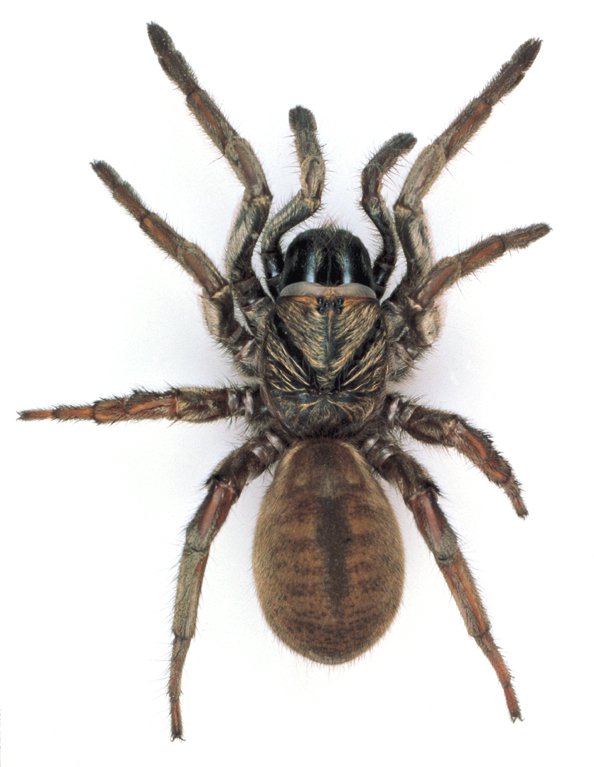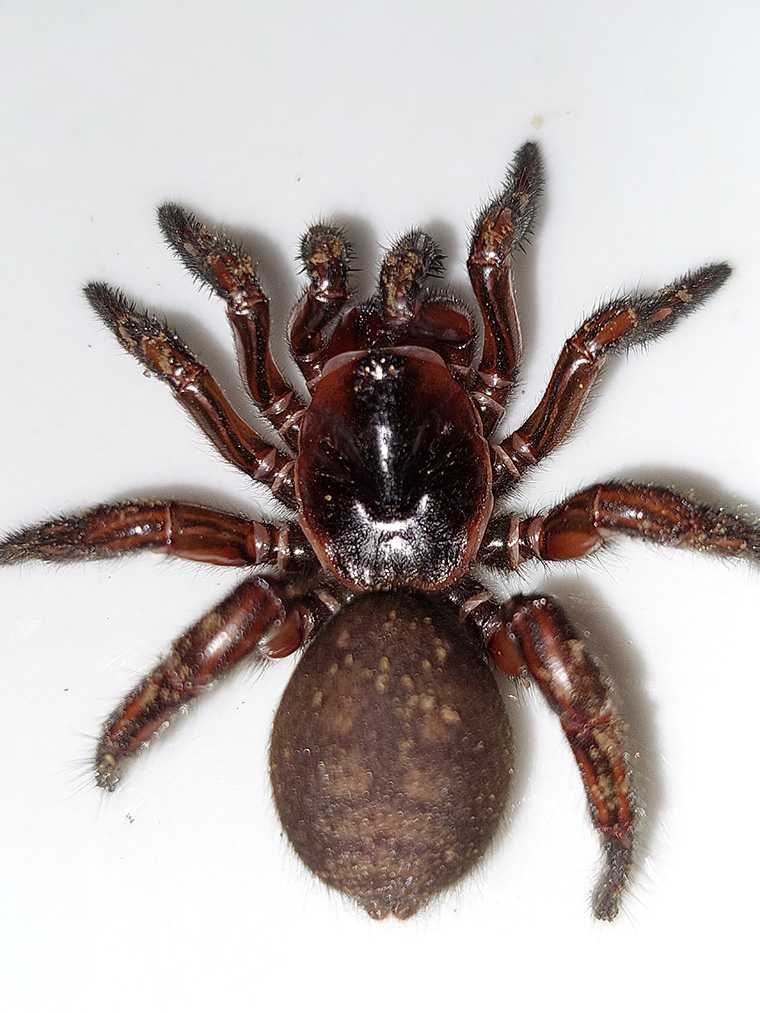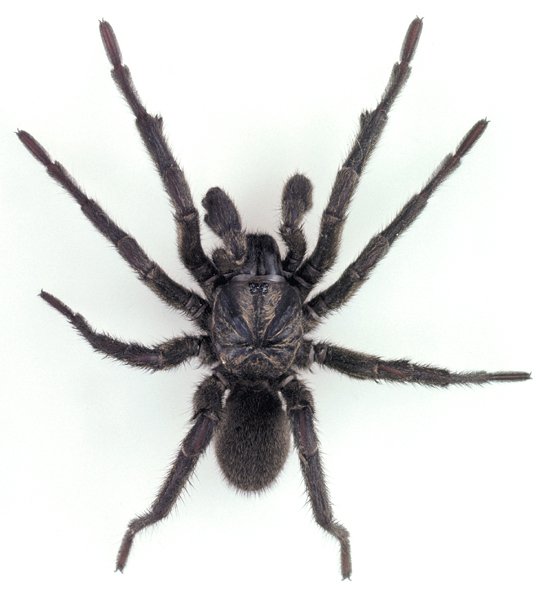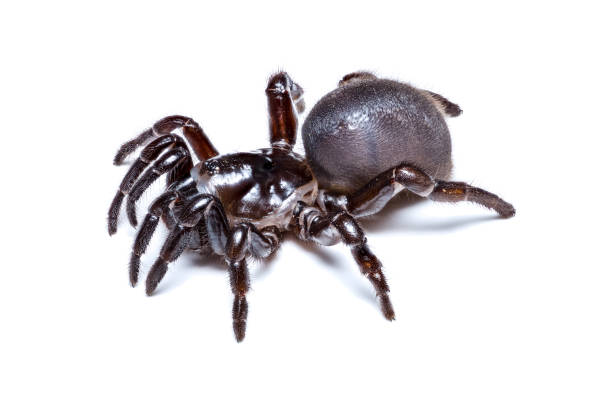Trapdoor spiders are among the most unique and mysterious creatures in the arachnid world. Known for their ingenious ambush tactics, these spiders are masters of stealth. They create elaborate burrows with camouflaged "trapdoors" to capture unsuspecting prey. In this comprehensive guide, we will delve deep into the life, behavior, habitat, and other fascinating aspects of trapdoor spiders.
Introduction: What Are Trapdoor Spiders?
Anatomy and Unique Features of Trapdoor Spiders
Hunting Techniques: The Art of Ambush
Habitat and Distribution
Types of Trapdoor Spiders Around the World
Life Cycle and Behavior
Are Trapdoor Spiders Dangerous?
Trapdoor Spiders as Pets: How to Care for Them
Conservation and Threats to Trapdoor Spiders
Fun Facts and Popular Culture
Trapdoor spiders are a family of mygalomorph arachnids that are best known for their unique method of hunting. These spiders construct burrows in the ground, which they cover with a "trapdoor" made of silk, dirt, and other debris. They lie in wait inside the burrow, only emerging to ambush unsuspecting prey that wanders too close. Though they resemble tarantulas, trapdoor spiders are smaller, more secretive, and have specialized ambush behavior.
Scientific Name: There are several species within families such as Ctenizidae and Idiopidae.
Lifespan: Typically 5-20 years, depending on species.
Size: Body size ranges from 1 to 4 cm, but their leg spans can make them appear much larger.
Venom: Used to immobilize prey, but not generally dangerous to humans.
Trapdoor spiders are designed for an ambush lifestyle, and their anatomy reflects this. From their powerful fangs to their remarkable camouflage skills, each feature of the trapdoor spider is geared towards efficient hunting.
Camouflage Mastery: Their burrows are perfectly camouflaged with dirt and silk trapdoors, making them nearly invisible to predators and prey alike.
Venomous Fangs: These fangs are used to quickly inject venom into prey to immobilize them. The venom is specifically adapted for subduing small insects and arthropods, not humans.
Thick Legs and Strong Digging Tools: The legs are strong and sturdy, adapted for digging and maintaining the integrity of their burrows.
Sensitive Sensory Hairs: They have specialized sensory hairs on their legs and abdomen that allow them to detect vibrations, helping them sense when prey is near.
While trapdoor spiders share similarities with tarantulas, including being venomous and having robust, stocky bodies, trapdoor spiders are typically smaller and less hairy. Unlike tarantulas, trapdoor spiders rely on stealth and ambush rather than actively seeking out prey.
The hunting behavior of trapdoor spiders is one of nature's most fascinating examples of stealth predation. Trapdoor spiders create elaborate burrows and wait patiently for prey to wander within reach. Here's how they do it:
Building the Trap: Trapdoor spiders start by constructing a burrow that is lined with silk. At the entrance, they create a trapdoor using the silk, dirt, and plant material found nearby.
Laying in Wait: The spider hides inside the burrow, leaving only the trapdoor exposed.
Detecting Prey: The spider is incredibly sensitive to vibrations caused by nearby movement. Once it detects vibrations from prey, it prepares to strike.
The Ambush: In a lightning-fast motion, the spider bursts out of the burrow and grabs its prey using its fangs. This surprise attack allows the spider to overpower and immobilize its prey in seconds.
Trapdoor spiders can launch from their burrow in less than a second, capturing prey such as insects, small vertebrates, or other arachnids. Their ambush technique ensures a successful hunt without expending unnecessary energy.
Trapdoor spiders can be found all over the world, but they are especially abundant in tropical and subtropical regions. They tend to prefer areas with loose, sandy soils, which are ideal for digging burrows.
Australia: Home to many species, including the large and iconic Euoplos variabilis (Golden Trapdoor Spider).
Africa: Various species of trapdoor spiders are found in dry, sandy regions across the continent.
United States: Species like the Aphonopelma genus can be found in parts of California and Florida.
Asia: Trapdoor spiders are also native to parts of Asia, particularly in forested areas.
Trapdoor spiders are generally solitary and spend most of their lives inside their burrows. They may only leave their burrow to mate or find food.
There are many species of trapdoor spiders, each adapted to its environment with unique traits. Let's look at some of the most well-known types:
Brown Trapdoor Spider (Misgolas rapax): Found in Australia, this species is known for its deep burrows and ability to camouflage perfectly with its surroundings.

Golden Trapdoor Spider (Euoplos variabilis): This striking species from Australia has golden-colored markings and is one of the largest in its family.

Queensland Trapdoor Spider: Commonly found in Australian backyards, this species has a mild temperament compared to other more aggressive species.

African Trapdoor Spider: Large, aggressive, and powerful, these spiders are often found in dry, sandy regions in Africa.

Each species has adapted to its local environment, whether it’s the dense rainforests of Australia or the arid landscapes of Africa.
Trapdoor spiders are solitary and primarily nocturnal creatures. Their life cycle is fascinating, and their long lifespan is a testament to their efficient hunting skills.
Mating: Male trapdoor spiders leave their burrows in search of a female. Once a mate is found, the female will lay eggs inside her burrow.
Egg Sac: Females protect their egg sacs until the eggs hatch, sometimes even guarding the young spiders until they are strong enough to survive on their own.
Trapdoor spiders have impressive lifespans compared to many other spider species. Some individuals can live for up to 20 years, although most live between 5 to 10 years.
While trapdoor spiders are venomous, they pose very little threat to humans. Their venom is used primarily to subdue prey, not to defend themselves from larger animals.
Effect on Humans: The bite of a trapdoor spider typically causes mild irritation, redness, and swelling. In rare cases, an allergic reaction may occur, but serious harm is unlikely.
Are They Aggressive? Trapdoor spiders are not naturally aggressive. They are reclusive and will only bite if provoked.
Trapdoor spiders can be kept as pets, though they are not as common as tarantulas due to their secretive nature. These spiders require very specific care to thrive in captivity.
Enclosure: The enclosure should mimic their natural burrow habitat, with a substrate that allows for easy digging. The trapdoor should also be created using materials like soil and silk.
Diet: They will eat small insects such as crickets, mealworms, and roaches.
Handling: Due to their solitary nature and quick movements, trapdoor spiders are not ideal for handling, and they should be observed from a distance.
Like many species, trapdoor spiders face various threats, including habitat loss, climate change, and human development.
Some species, such as the Golden Trapdoor Spider, are classified as endangered due to the destruction of their natural habitats by urbanization. Conservation efforts focus on protecting their habitats and ensuring that future generations can continue to thrive.
The mystery and ambush skills of trapdoor spiders make them a popular subject for nature documentaries and scientific research.
They can sense their prey using seismic waves, making them nature's miniature "seismographs".
In ancient Egypt, spiders were once seen as symbols of mystery and death, and trapdoor spiders were often mistaken for mysterious creatures.
Trapdoor spiders demonstrate the infinite creativity of nature with their amazing adaptability and hunting skills. They are both masters of ambush and an important part of the ecosystem. Whether researchers or enthusiasts, they are deeply attracted by their unique charm。
animal tags: Trapdoor-Spiders
We created this article in conjunction with AI technology, then made sure it was fact-checked and edited by a Animals Top editor.